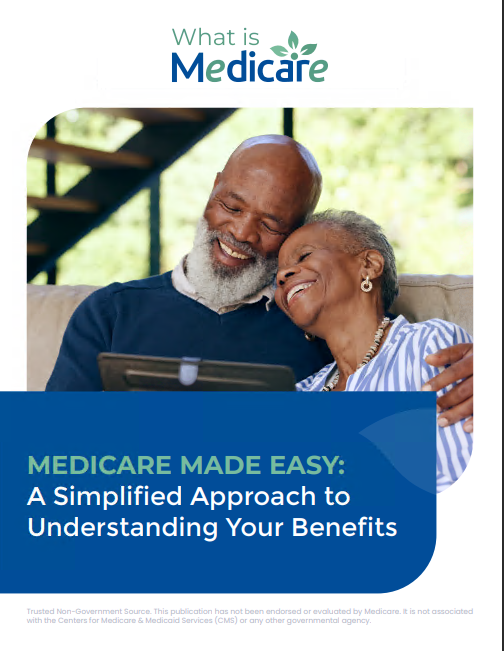Key Takeaways:
- Medicare premiums and out-of-pocket costs for 2024 vary significantly depending on income, coverage choices, and additional factors like late enrollment penalties.
- Understanding the breakdown of Medicare Parts A, B, C, and D costs can help you plan for healthcare expenses more effectively.
Trying to Make Sense of Medicare Costs? Here’s a Simple Breakdown of Premiums and Extra Expenses
Navigating the complexities of Medicare costs can be overwhelming, especially with the annual adjustments to premiums and deductibles. As of 2024, these costs have seen slight increases across various parts of Medicare. This article will break down these costs to help you understand what you might pay, depending on your chosen coverage and financial situation.
Medicare Part A: Hospital Insurance Costs
Medicare Part A covers inpatient hospital care, skilled nursing facility care, hospice, and some home health services. For most beneficiaries, there is no premium for Part A because they or their spouse have paid Medicare taxes for at least 40 quarters (10 years). However, if you have fewer than 40 quarters of coverage, you’ll pay a monthly premium. In 2024, the premium is $278 per month if you have 30-39 quarters of coverage, and $505 per month if you have fewer than 30 quarters.
In addition to premiums, Medicare Part A comes with other costs. The inpatient hospital deductible in 2024 is $1,632 per benefit period, an increase from $1,600 in 2023. This deductible covers the first 60 days of Medicare-covered inpatient hospital care. Beyond that, you’ll pay $408 per day for days 61 through 90 of hospitalization, and $816 per day for lifetime reserve days, which are days that you can use beyond the standard benefit period but are limited to 60 days over your lifetime.
For those needing skilled nursing facility care, the cost-sharing is another important consideration. In 2024, the coinsurance for days 21 through 100 of extended care in a skilled nursing facility is $204 per day, up slightly from $200 in 2023. These costs can add up quickly, especially for extended stays, making it essential to understand your benefits and consider supplementary coverage, like a Medigap policy, which can help cover these out-of-pocket expenses.
Medicare Part B: Medical Insurance Costs
Medicare Part B covers outpatient care, doctor services, preventive services, and some home health care. The standard monthly premium for Part B in 2024 is $174.70, up from $164.90 in 2023. This increase reflects rising healthcare costs across the board, from doctor visits to outpatient surgeries. If your income is above a certain threshold, you may pay more. For example, if your individual income is above $103,000 (or $206,000 for married couples), your premiums can range from $244.60 to as high as $594.00 per month.
The Part B deductible for 2024 is $240, which is an increase from the previous year’s $226. After meeting this deductible, you generally pay 20% of the Medicare-approved amount for most doctor services, outpatient therapy, and durable medical equipment. It’s important to note that there is no cap on out-of-pocket spending in Part B, which can lead to significant expenses if you require frequent medical care. This is where considering a Medigap policy could be beneficial, as it can cover some of these additional costs, including coinsurance and copayments.
One crucial aspect of Part B costs is the Income-Related Monthly Adjustment Amount (IRMAA). This adjustment is an additional charge for higher-income individuals and couples. It’s determined by your modified adjusted gross income (MAGI) from two years prior. So, for 2024, IRMAA is based on your 2022 income. The IRMAA surcharge ranges significantly, potentially doubling your standard premium if you’re in the highest income bracket. Because of this, it’s essential for higher-income retirees to plan accordingly, as their Medicare costs could be considerably higher than those with lower incomes.
Medicare Part C (Medicare Advantage): Additional Costs
Medicare Advantage (Part C) plans are an alternative to Original Medicare (Parts A and B) and are offered by private insurance companies. These plans typically include Part D (prescription drug coverage) and may offer additional benefits like vision, hearing, and dental care. The costs for Medicare Advantage plans vary widely depending on the plan you choose, your location, and whether the plan charges a premium. While some plans may have low or even no premiums, they often come with higher out-of-pocket costs when you receive services.
Medicare Advantage plans often have networks of doctors and hospitals that you must use to get the lowest costs, and these plans may include different rules for how you get services, such as whether you need a referral to see a specialist. Despite these restrictions, Medicare Advantage plans can be a good option for those who prefer having all their coverage bundled into one plan.
When considering a Medicare Advantage plan, pay attention to the out-of-pocket maximums, which can protect you from excessive costs. In 2024, the maximum out-of-pocket limit for Medicare Advantage plans is $8,850 for in-network services and $13,300 for combined in- and out-of-network services. This cap provides some financial protection, but it’s still essential to be aware of potential costs, especially if your plan includes higher cost-sharing for services outside of the network.
Medicare Part D: Prescription Drug Coverage Costs
Medicare Part D covers prescription drugs and is available as a stand-alone plan or as part of a Medicare Advantage plan. The average basic premium for Part D is expected to be around $34.70 in 2024, which is a slight increase from $32.09 in 2023. However, your actual premium may be higher or lower depending on the plan you select and whether you qualify for any subsidies. It’s important to shop around and compare plans annually, as the list of covered drugs (the formulary) and the costs can change each year.
Income-related monthly adjustment amounts (IRMAA) also apply to Part D. For beneficiaries with higher incomes, these adjustments will add between $12.90 and $81.00 to the monthly premium in 2024. Just like with Part B, these surcharges are based on your income from two years prior, making it essential to factor in when planning for retirement.
Out-of-Pocket Costs and Changes in 2024
Several important changes in 2024 affect Medicare Part D out-of-pocket costs. For example, the new prescription drug law caps the cost of insulin at $35 per month and eliminates cost-sharing for vaccines recommended by the Advisory Committee on Immunization Practices. Additionally, beneficiaries entering the catastrophic coverage phase of Part D will no longer have to pay any cost-sharing for their medications. This change is significant, as it can help reduce the financial burden for those who require expensive, ongoing prescription drugs.
Another important update for 2024 is the expansion of the Low-Income Subsidy (LIS) program, also known as “Extra Help.” This program reduces the costs of prescription drugs for those with limited income and resources. The expansion means that more people will qualify for the full subsidy, which can lower their prescription drug costs dramatically. If you’re eligible, you could pay much less for premiums, deductibles, and copayments, making it easier to afford the medications you need.
Tips for Managing Medicare Costs
-
Review your plan annually: Medicare plans and your health needs may change from year to year. During the annual enrollment period (October 15 to December 7), review your current plan and compare it with other options to ensure you have the best coverage for your needs at the best price. Failing to review your plan could result in paying higher premiums or out-of-pocket costs than necessary.
-
Consider Medigap insurance: If you choose Original Medicare, a Medigap policy can help cover some of the out-of-pocket costs, such as copayments, coinsurance, and deductibles. While Medigap policies require an additional premium, they can save you money in the long run if you have frequent healthcare needs. Medigap policies are standardized, meaning the benefits are the same no matter which insurance company offers them. However, costs can vary, so it’s important to shop around.
-
Look into income-related adjustments: If your income has changed significantly due to retirement or another life event, you may qualify for a reduction in your IRMAA. Contact the Social Security Administration (SSA) to request a new determination based on your current income. Adjusting your IRMAA can potentially save you hundreds of dollars per year on your Medicare premiums.
-
Explore Extra Help programs: If you have a limited income, you may qualify for programs that help pay for Medicare premiums and other costs. The Extra Help program, for example, can lower your Part D costs significantly if you meet the income and resource limits. Additionally, some states have programs that help pay premiums for Part B or provide assistance with out-of-pocket costs.
Planning for Future Changes
Medicare costs continue to evolve, and staying informed is crucial for managing your healthcare expenses. In 2025, additional changes, such as a $2,000 cap on out-of-pocket drug costs for Part D, will further alter the landscape. Understanding these upcoming adjustments will help you plan your budget and healthcare needs more effectively. Future changes could also impact your eligibility for certain programs or the benefits available to you, so it’s essential to stay updated on Medicare policies.
Stay Informed
Understanding Medicare’s cost structure is key to managing your healthcare budget and avoiding unexpected expenses. By staying informed about the latest changes, reviewing your coverage annually, and exploring additional coverage options like Medigap, you can make more informed decisions about your Medicare coverage and ensure that you are not overpaying for your healthcare.
Contact Information:
Email: [email protected]
Phone: 7195551234










